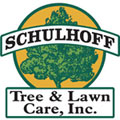You do your best to maintain your lawn. You time your sprinklers. You pull the weeds. And you mow regularly.
But despite your best efforts, your grass still doesn’t look as green as the patch on the other side of the fence. You wonder if your neighbor uses a specialized fertilizer to achieve such a vibrant color. But no, you checked- he uses the same brand, proportions, and frequency you do.
After a brief chat, you discover that your neighbor hires a professional to perform core aeration in the early spring and fall. The aeration process involves removing small plugs of thatch from the lawn, and it provides the following benefits.
1. Enhanced Oxygen, Water, and Fertilizer Uptake
If left untended, grass tends to grow tight clusters. The roots have to fight each other for water, air, and other nutrients. As a result, some patches of your lawn will thrive while others will die, or your lawn as a whole won’t receive adequate nutrients to survive drought and heat.
Core aeration breaks up the roots and gives your grass room to breathe and grow. Additionally, the holes allow water to reach the roots directly, so less water evaporates on the surface. With more air and water, your grass will grow in thick, green, and vibrant.
2. Reduced Puddling and Water Waste
When you water your lawn, does it remain wet and spongy for hours afterward? If so, you either over-water your lawn or your soil has become too compacted to absorb water.
Soggy soil hurts your grass in multiple ways:
It discourages roots from digging deep into the earth; they only need to grow near the surface to access water. Shallow roots become easily stressed during harsh weather, and they have a hard time recovering from insect damage. It creates a good environment for bacteria, fungus, and mold to grow. Together, they’ll rot the roots, leaving you with sickly, discolored, and dying turf.
It leaves grass vulnerable to weeds. Grass with shallow root systems have more room for weeds and other invasive plants to take hold.
However, core aeration loosens the soil so it absorbs greater amounts of water, rather than puddling on the surface. As a result, you need less water to maintain your grass and encourage a healthy root system.
3. Improved Thatch Breakdown
As with many other plants, grass has a below-ground root system topped by an above-ground shoot. However, in between the shoot and the root, you’ll find a layer of thatch. Thatch consists of leaves, stems, roots (some living and some dead) that slows water loss and insulates against temperature fluctuations.
While a thin layer of thatch contributes to your lawn’s overall health, too much thatch prevents sunlight from reaching the lower blades. Furthermore, thick patches of thatch hold water against the blades, promoting disease and rot while creating a safe haven for insects and pests.
Core aeration, fortunately, breaks up the thatch and encourages a healthy breakdown of the organic material.
4. Enhanced Seed Germination
If you have bare spots in your lawn, you may try to lay down some seed to encourage new growth and fill in the gaps. But you have to do more than toss new seed on the grass and hope it germinates.
Seeds require a lot of soil contact before they’ll sprout. And if your new seeds have to compete with existing thatch and root systems, they won’t take hold. Even if they manage to take root, your new blades of grass need the perfect balance of moderate temperatures and moisture to grow into full blades. If their environment changes significantly, the sprouts will die.
Core aeration solves many problems with the initial growing stages. It creates natural holes for seeds to hide, as well as room for them to grow. And since aerated lawns allow water to sink deep into the ground, the new shoots will have to send out deeper roots and won’t suffer as much during harsh weather.
Enjoy Greener Grass
As you can see, core aeration improves the health of your turf in a variety of ways, and you’ll undoubtedly see more benefits when you aerate your grass regularly. If you want a greener lawn, talk to a professional landscaper about aerating your lawn.
